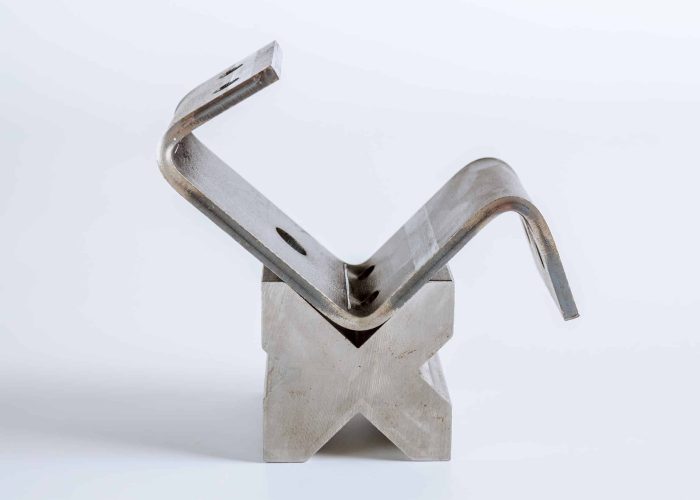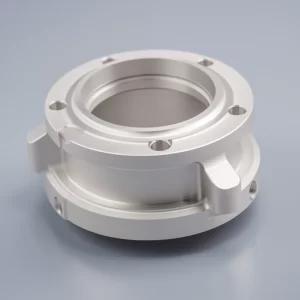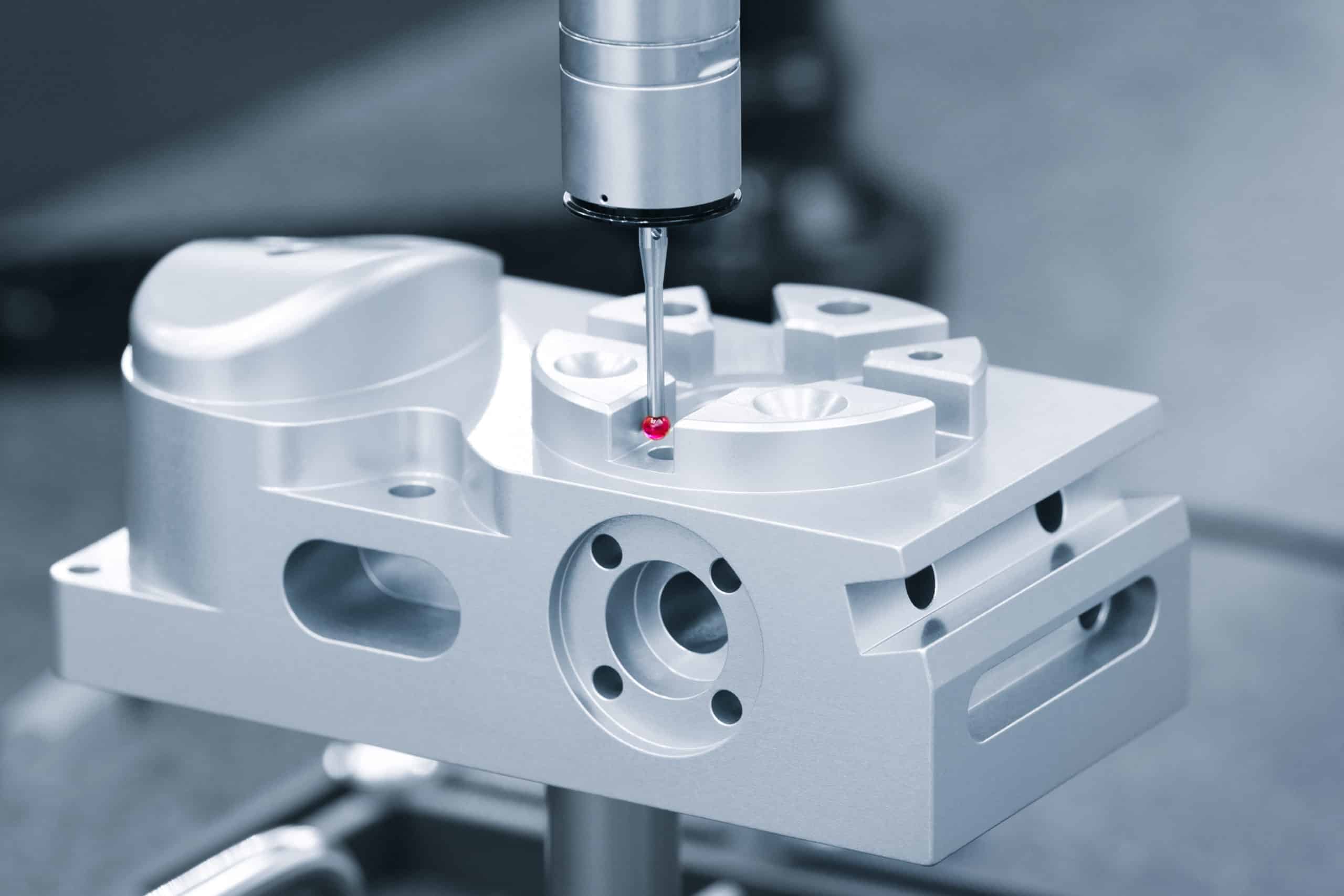Air bending is one of the most flexible sheet metal forming processes, but understanding its tolerance capabilities is crucial for designing parts that fit properly without costly rework. With years of experience bending everything from precision enclosures to structural brackets, we’ve learned that realistic tolerance expectations depend heavily on material properties, tooling setup, and geometric constraints.
Air bending typically achieves ±1-2° angular tolerance and ±0.5-1.0 mm dimensional tolerance on most common materials. Tighter tolerances are possible with proper tooling, material preparation, and setup validation, but they require additional process controls that increase cost and lead time.
Learn what affects air bending tolerances, how to design for consistency, and when to specify tighter controls—based on real production data.
Table of Contents
When should I specify air bending over other forming methods?
Air bending is the optimal choice when you need design flexibility, prototype-friendly tooling, or cost-effective production for parts under 1000 pieces. Unlike bottom bending or coining, air bending uses universal tooling that adapts to multiple bend angles without expensive custom dies, making it ideal for iterative designs or mixed production runs.
Decision Matrix:
- Choose Air Bending: Mixed bend angles, <1000 pieces, prototype phase, ±1-2° tolerance acceptable
- Choose Bottom Bending: >5000 pieces, ±0.5° tolerance required, repeatable angles
- Choose Coining: Critical dimensions, minimal springback, high-volume production
We’ve processed over 500 air bending projects across medical, audio, and aerospace applications, consistently achieving ±1-2° angular accuracy with 90% first-pass success rates. Our climate-controlled press brake setup minimizes material temperature variations that cause tolerance drift—a common issue in high-mix production environments.
For aluminum enclosures in audio equipment, air bending delivers the bend consistency needed for proper faceplate alignment while allowing design revisions without retooling costs. Materials like 6061-T6 aluminum and 304 stainless steel show predictable springback behavior, making them ideal for air bending applications. However, aerospace brackets requiring AS9100 documentation often need bottom bending to meet ±0.5° specifications and reduce springback variation.
Design Takeaway: Use this decision tree—if your part needs >3 different bend angles OR you’re in prototype phase OR production volume <1000 pieces, specify air bending. For single-angle, high-volume parts requiring <±1° tolerance, bottom bending justifies the tooling cost.

What's the smallest flange I can design without bending issues?
The minimum flange length for reliable air bending is 4x material thickness, with 6x thickness recommended for consistent results. For 1.5mm steel, this means a minimum 6mm flange, though 9mm provides better dimensional stability and reduces edge distortion during forming.
Quick Reference: 0.5mm material = 3mm flange minimum, 1.0mm = 6mm minimum, 1.5mm = 9mm minimum, 2.0mm = 12mm minimum.
We’ve successfully bent flanges as small as 3mm on 0.5mm aluminum, but these require specialized tooling and slower forming speeds to prevent wrinkling or tearing. Our press brake operators consistently achieve better dimensional accuracy when flanges exceed the 6x thickness rule—parts stay within ±0.5mm dimensional tolerance versus ±1.2mm for minimum-length flanges.
Short flanges create several problems: insufficient material support during bending leads to edge curling, reduced clamping force causes positional drift, and limited tool contact increases springback variation. In medical device housings, we’ve seen 4mm flanges on 1mm stainless steel cause sealing surface irregularities that required secondary machining operations.
Design Takeaway: Always design flanges to 6x material thickness when possible. If space constraints force shorter flanges, add relief cuts or consider alternative forming methods like hemming to achieve the required edge condition.
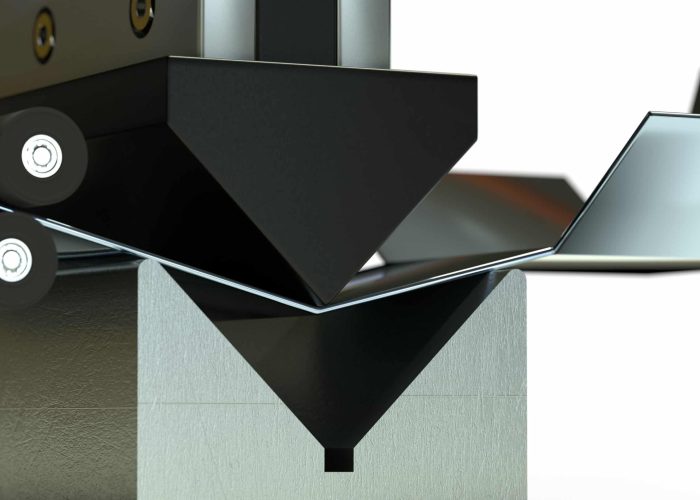
How do I prevent springback from affecting my bend angles?
Springback compensation ranges from 1-4° depending on material properties, with high-strength steels requiring the most adjustment. Program your press brake with material-specific springback factors: 1-2° for aluminum alloys, 2-3° for mild steel, and 3-4° for stainless steel or high-strength materials.
Compensation by Material: 6061-T6 aluminum requires 1-2° overbend, 304 stainless needs 2-3°, cold-rolled steel 1.5-2.5°, and high-strength steel 3-4°.
Our CNC press brake database contains springback factors for over 50 material/thickness combinations, developed through thousands of test bends and verified with digital angle measurement. We achieve ±1° final angle accuracy by adjusting tonnage, die opening, and penetration depth based on material yield strength and work-hardening characteristics.
Material grain direction significantly affects springback—bends perpendicular to the rolling direction spring back 15-20% more than parallel bends. For precision enclosures requiring multiple bend orientations, we orient parts to minimize grain direction effects or apply directional compensation factors. Temperature also matters: cold material (below 15°C) increases springback by 10-15% compared to room temperature forming.
Design Takeaway: Request springback compensation values from your fabricator based on your specific material and thickness. For critical angles, specify final angle requirements rather than press brake settings—let the fabricator handle the compensation calculations.
How close can I put holes or cutouts to a bend without distortion?
Maintain a minimum distance of 2.5x material thickness plus bend radius from any hole edge to the bend line to prevent distortion. For 1.5mm steel with a 3mm inside radius, keep holes at least 7.5mm from the bend line. Closer spacing risks hole elongation, edge cracking, or dimensional shifts during forming.
Quick Calculator: 1.0mm material = 5.5mm minimum (with 3mm radius), 1.5mm = 7.5mm, 2.0mm = 9.0mm, 3.0mm = 12.5mm from bend line.
We’ve tested hundreds of perforated parts and consistently see distortion when holes fall within this minimum zone. A recent medical enclosure project with 3mm holes placed 5mm from bend lines showed 0.3mm hole elongation and 15% dimensional variance. Moving holes to 8mm spacing eliminated all distortion issues while maintaining the required ventilation area.
Hole size matters significantly—larger holes require greater clearance because they remove more material support during bending. Slots oriented parallel to bend lines cause less distortion than perpendicular slots, while round holes perform better than square cutouts. For laser-cut parts requiring tight hole positioning, we recommend designing relief slots between holes and bend lines to control stress concentration.
Design Takeaway: Use the 2.5x thickness plus radius formula for hole placement. If your design requires closer spacing, consider forming the part first, then adding holes via secondary operations like laser cutting or punching

What's a safe inside bend radius for my material and thickness?
Use a minimum inside bend radius of 1x material thickness for most materials, with 2x thickness for work-hardening alloys like stainless steel. For 2mm aluminum, a 2mm inside radius works reliably, while 2mm stainless steel needs a 4mm radius to prevent cracking or surface defects.
Material-Specific Chart: 1.0mm aluminum = 1.0mm radius, 1.5mm aluminum = 1.5mm radius, 1.0mm stainless = 2.0mm radius, 2.0mm stainless = 4.0mm radius, 1.5mm spring steel = 4.5mm radius.
Our bend testing data shows that undersized radii cause three main problems: surface cracking on the outside of the bend, material thinning exceeding 20% of original thickness, and unpredictable springback due to work-hardening effects. We’ve successfully bent 3mm aluminum with 1.5mm inside radius using specialized tooling, but standard production runs achieve better consistency with 3mm or larger radii.
Grain direction affects minimum radius requirements—bends across the grain (perpendicular to rolling direction) need 25-30% larger radii than bends parallel to grain. For parts requiring multiple bend orientations, design to the most restrictive grain direction requirement. Material finish also matters: mill scale or oxide layers on hot-rolled steel can cause surface cracking even with adequate bend radii.
Design Takeaway: Start with 2x material thickness for inside radius unless you know your material’s forming limits. For prototype parts, test smaller radii if space is critical, but expect potential tooling changes for production runs.
How accurate is air bending — can I hold tight tolerances?
Air bending typically achieves ±1-2° angular tolerance and ±0.5-1.0mm dimensional tolerance on bend locations. Tighter tolerances of ±0.5° and ±0.25mm are possible with climate-controlled environments, material preconditioning, and validated tooling setups, but require additional process controls that increase cost by 20-30%.
Tolerance Decision Chart: Need ±2° or looser = standard air bending. Need ±1° = controlled setup required. Need ±0.5° = precision process + 25% cost increase. Need tighter than ±0.5° = consider bottom bending instead.
Our CNC press brake with angle feedback sensors consistently holds ±0.8° on aluminum parts and ±1.2° on stainless steel under normal shop conditions. For a recent aerospace bracket project requiring ±0.5° tolerances, we implemented temperature monitoring, material stress relief, and three-point measurement validation to achieve the specification on 95% of parts without secondary operations.
Material consistency significantly affects achievable tolerances—mill-certified material with controlled thickness variation performs 40% better than standard stock. Part geometry also matters: simple 90° bends hold tighter tolerances than complex multi-bend sequences where accumulated errors compound. Long flanges (>200mm) are more susceptible to springback variation than shorter features.
Design Takeaway: Specify ±1.5° angular tolerance for most air bending applications. If your assembly requires tighter tolerances, discuss material selection and process controls with your fabricator before finalizing the design—or consider alternative forming methods.
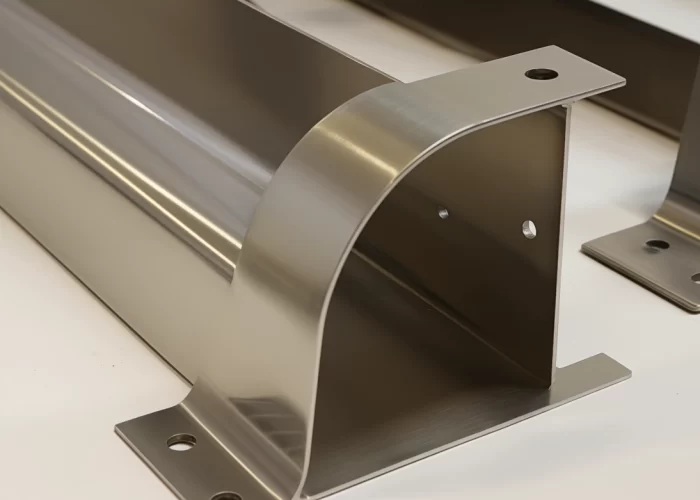
Will switching materials affect my bend accuracy and consistency?
Material changes can shift bend angles by 1-3° and dimensional accuracy by ±0.3-0.8mm due to different springback characteristics and yield strength properties. Switching from 6061-T6 aluminum to 304 stainless steel typically requires 2° additional springback compensation and may reduce dimensional repeatability from ±0.4mm to ±0.7mm.
Material Switch Checklist: Aluminum to steel = reprogram +2-3° compensation. Steel to aluminum = reprogram -1-2° compensation. Same material, different supplier = verify with test bends. Thickness change >0.2mm = expect ±1° program adjustment needed.
We’ve documented springback variations across 50+ material combinations in our press brake database. When a medical device customer switched from 1.5mm aluminum to 1.2mm stainless steel for corrosion resistance, bend angles shifted by 2.8° and required complete program revision. However, parts maintained ±0.6mm dimensional accuracy once compensation factors were applied.
Material thickness tolerance also affects consistency—±0.1mm thickness variation in stainless steel can cause ±0.8° angle variation, while the same variation in aluminum produces only ±0.4° change. Heat treatment condition matters too: annealed materials show less springback variation than work-hardened conditions, making T-0 aluminum more predictable than T-6 for tight tolerance applications.
Design Takeaway: Test bend samples when switching materials, especially between material families (aluminum to steel). Request springback data from your fabricator for the specific material grade and thickness to avoid costly program revisions during production.
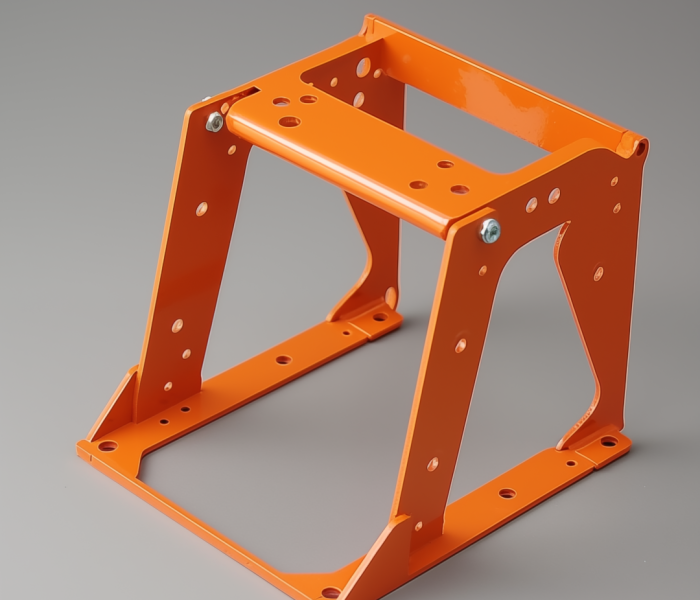
Conclusion
Air bending delivers ±1-2° tolerances with proper material selection and springback compensation. Design flanges to 6x thickness, maintain adequate hole clearances, and specify realistic bend radii for consistent results. Contact us to explore air bending solutions tailored to your sheet metal part requirements.
Frequently Asked Questions
Threaded holes require greater clearance than through holes—maintain at least 4x material thickness plus bend radius from the hole centerline to avoid thread distortion. Consider adding holes after bending via secondary operations for critical threaded features within 8mm of bend lines.
For most air bending applications, ±1.5° angular tolerance and ±0.5mm dimensional tolerance provide the best cost-to-precision balance. Tighter tolerances require climate-controlled setups, material preconditioning, and additional inspection steps that increase cost by 20-30%. Reserve ±0.5° specifications for critical assembly features only.
Check three critical areas: flanges shorter than 4x material thickness will distort, holes closer than 2.5x thickness plus bend radius to the bend line will elongate, and inside radii smaller than 1x thickness (2x for stainless) risk cracking. Upload your CAD file for a manufacturability review before finalizing the design.
No—switching from aluminum to steel typically requires 2-3° additional springback compensation and may reduce dimensional repeatability. Steel also needs larger bend radii and shows more variation with thickness tolerance. Always request test bends when changing materials between prototype and production phases.
Minimize accumulated stress by sequencing bends from shortest to longest flanges, avoid overbending early features, and consider stress-relief annealing for complex geometries. Parts with more than 4 bends or conflicting bend orientations may benefit from forming fixtures or alternative manufacturing approaches.
Material thickness variation is the most common cause—±0.1mm thickness tolerance can create ±0.8° angle variation in stainless steel. Other factors include temperature changes, tool wear, and inconsistent material grain direction. Request mill-certified material with controlled thickness for critical applications.
